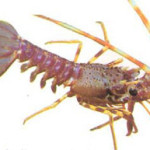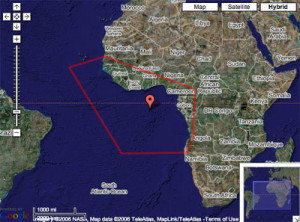Local stocks support local artisanal fisheries but transboundary and migratory stocks attract large commercial offshore foreign fleets, and these have historically exerted extreme pressure on the resources, placing the fisheries at risk of collapse.
The Senegal and Gambia River Deltas along the coasts of Senegal, Gambia, Guinea and Guinea-Bissau of are diverse areas including large floodplains, saline and inter-tidal flats, dykes, and sand dunes. Important populations of seabirds and water birds nest in the region.
These deltas are also crucial stopover sites for migrating birds, especially waders. The Guinean or Atlantic humpback dolphin (Sousa teuzsii), and the large (up to 1.5m and 200kg) green turtle (Chelonia mydas) are to be found in these waters.
The Guinean-Congolian Coast Mangroves that border Nigeria, Cameroon, Benin, Togo, Ghana, Congo, Cote d’Ivoire, Liberia, Equatorial Guinea, Gabon, Sierra Leone and Angola are the wettest region in Africa, receiving over 10,000 mm of rain per year.
Mangroves play important roles as nursery areas for fishes and
shrimp, and in stabilising the shoreline. Mangroves are found discontinuously from Senegal to northern Angola, with important areas in the Niger delta, Cameroon, and Gabon. The West African manatee (Trichechus senegalensis) is an interesting inhabitant of the shallow coastal wasters and freshwater estuaries.
The Gulf of Guinea region with borders of Equatorial Guinea, Gabon, Congo, Angola, Cameroon, Nigeria, Benin, Togo and São Tomé & Príncipe contains areas of upwelling characterized by high productivity, and the southern part of the region is a particularly rich fishery, particularly for deepwater shrimp off the coast of Angola. This is one of the most productive and diverse tropical upwelling zones in Africa and the eastern tropical Atlantic. Dolphin and porpoises are present as well as the West African manatee. Other species
include the green turtle (Chelonia mydas) and olive Ridley turtle (Lepidochelys olivacea).
The coral reefs of four islands in the Gulf of Guinea (Annob√≥n, Bioco, S√£o Tom√© and Pr√≠ncipe) have been ranked second in the list of the world’s top 10 coral reef hotspots by Conservation International. These
hotspots are rich in marine species found only in small areas and therefore highly vulnerable to extinction.
The exact area of reef is unknown, but is likely to be less than 200 sq. km. Key threats to the reef include coastal development, sediment pollution from logging, over-fishing, and a proposal to harvest coral.
There are two species of coral, Schizoculina africana and Schizoculina fissipara that are endemic to the area and are adapted to the very low salinities of the water from rivers flowing into the Gulf.
Download the pre-dive briefing pack for this eco-region here.






Social Profiles